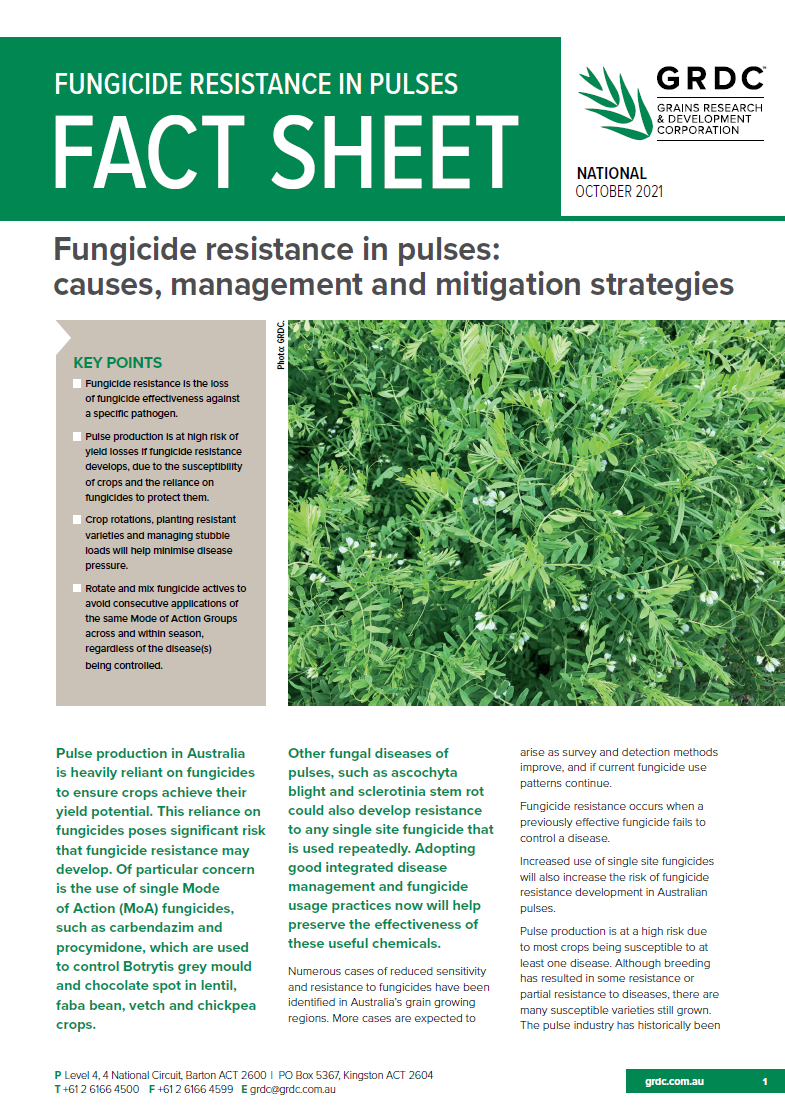Fungicide resistance in pulses
Fungicide resistance in pulses
Published: 27 Oct 2021
Pulse production in Australia is heavily reliant on fungicides to ensure crops achieve their yield potential. This reliance on fungicides poses significant risk that fungicide resistance may develop. Of particular concern is the use of single Mode of Action (MoA) fungicides, such as carbendazim and procymidone, which are used to control Botrytis grey mould and chocolate spot in lentil, faba bean, vetch and chickpea crops.
Other fungal diseases of pulses, such as ascochyta blight and sclerotinia stem rot could also develop resistance to any single site fungicide that is used repeatedly. Adopting good integrated disease management and fungicide usage practices now will help preserve the effectiveness of these useful chemicals.
Key points
- Fungicide resistance is the loss of fungicide effectiveness against a specific pathogen.
- Pulse production is at high risk of yield losses if fungicide resistance develops, due to the susceptibility of crops and the reliance on fungicides to protect them.
- Crop rotations, planting resistant varieties and managing stubble loads will help minimise disease pressure.
- Rotate and mix fungicide actives to avoid consecutive applications of the same Mode of Action Groups across and within season, regardless of the disease(s) being controlled.
Download PDF
Region: National
GRDC Project Code: CUR1905-001SAX,

